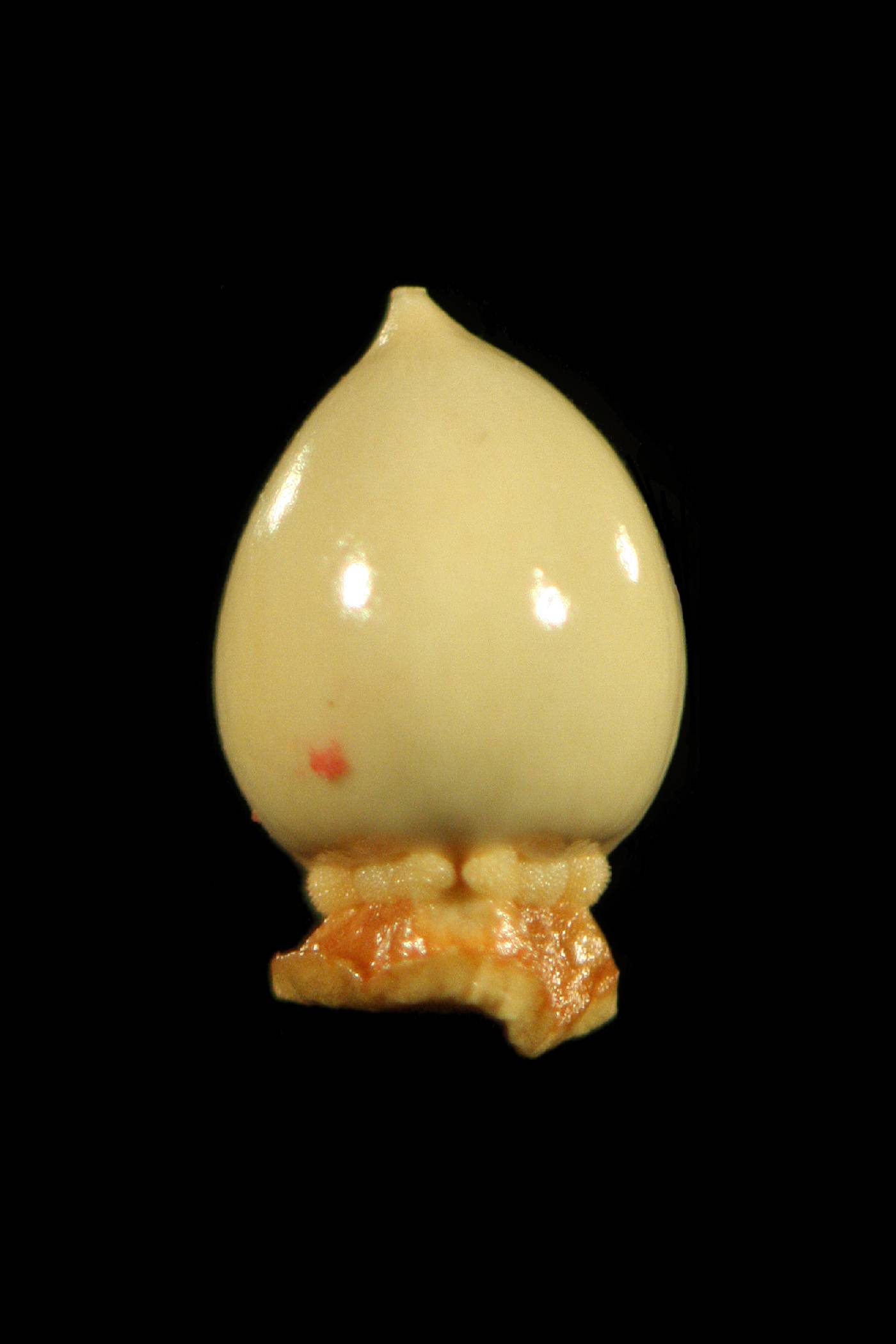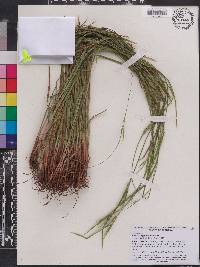|
|
|
|
Family: Cyperaceae
littlehead nutrush
|
Plants perennial; rhizomes elongate, nodulose, to 5 mm thick. Culms usually in tufts, erect, slender, 30-60(-70) cm, sometimes appearing weak, glabrous or hairy. Leaves: proximal sheaths purple tinged, the distal rosy red-tinged, usually narrowly winged, ribbed, pubescent or glabrous; contra-ligules ovate; blades linear, ribbed, shorter than or equaling culms, 2-6 mm wide, glabrous or ciliate to scabrous. Inflorescences axillary and terminal, of 2-5 small clusters, 5-20 × 5-10 mm, each with 1-4 spikelets; the lateral on reddish filiform peduncles dilated toward apex, hairy or scabrous on angles; bracts subtending inflorescence leaflike, linear-lanceolate, 3-10 cm, glabrous or ciliate. Spikelets bisexual and staminate, staminate part frequently reduced in bisexual spikelets, purple tinged, 3-8 mm; staminate scales lanceolate; pistillate scales ovate, acuminate. Achenes white or grayish or grayish brown with dark longitudinal bands, ovoid, shorter than scales, 3-4 mm, smooth, shining, apex umbonate; hypogynium golden brown, rather broad, base obtuse-trigonous, supporting 8-9 small, round or elongate, granulose-spiculose tubercles. Fruiting spring-summer. Mixed mesic to xeric woods or glades, wet meadows; 0-500 m; Ala., Ark., D.C., Fla., Ga., Ill., Ind., Ky., La., Miss., Mo., N.C., Ohio, Okla., S.C., Tenn., Tex., Va.; Mexico; Central America (Guatemala, Honduras) Scleria oligantha sometimes extends from its typical wooded habitat to open areas.
Slender, 3-8 dm, cespitose from knotty rhizomes; main blades 3-5 mm wide, attenuate, often sparsely villous; cymes often solitary, the lower ones when present long-peduncled, the upper subtended and partly sheathed by foliaceous bracts to 10 cm נ5 mm; pistillate scales ovate, acuminate or short-aristate; achene bright white, ovoid, 3-3.5 mm, apiculate, the short, broad, smooth, brown hypogynium separated from the body by 8 or 9 rounded white tubercles. Wet meadows and woods; C. Amer., Mex., and Puerto Rico, n. to Tex., Mo., Ind., Va., and reputedly N.J. Gleason, Henry A. & Cronquist, Arthur J. 1991. Manual of vascular plants of northeastern United States and adjacent Canada. lxxv + 910 pp. ©The New York Botanical Garden. All rights reserved. Used by permission. |



